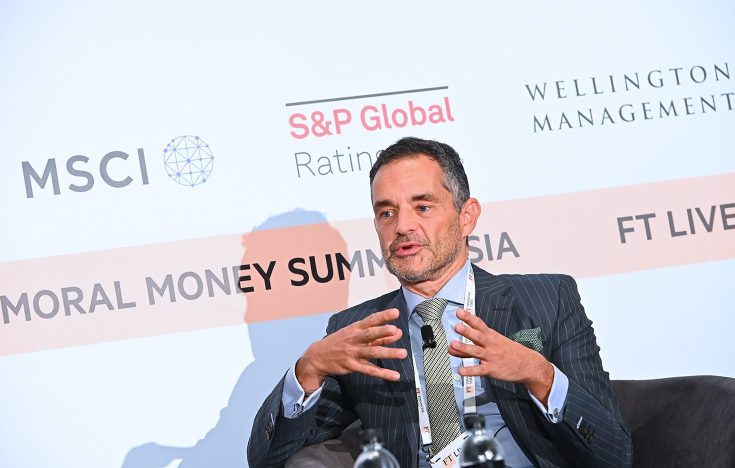The post title
The excerpt
As companies step up their focus on the social and environmental impact of their value chain, the range of sustainable financing tools must also expand.

Sustainability strategies are evolving. Companies are thinking beyond the environmental impact of their own operations and studying ways to limit Scope 3 emissions – which includes all other indirect emissions that occur in a company’s value chain – and social risks across their supply chains. This holistic view involves a larger number of participants, from smaller suppliers to major buyers, as well as local and global regulators. Meeting environment, social and governance (ESG) commitments in the future will require greater cooperation between companies and their stakeholders.
The financial sector is helping drive this evolution through an increasingly holistic approach encompassing advice, capital markets, sustainability-linked instruments and private investments. As banks consider the wider impact of their assets and operations, they are also doing more to support their clients on their own sustainability journeys.

There’s a clear trend from financing the green economy to greening the whole economy.
Joris Dierckx, Regional Head for South East Asia, BNP Paribas
“There’s a clear trend from financing the green economy to greening the whole economy,” said Joris Dierckx, Regional Head for South East Asia at BNP Paribas, speaking at the Financial Times’ Moral Money Summit in Singapore. “Five years ago, the model was to help clients issue green bonds that funded their renewable energy portfolios – now we’re seeing a shift to directing that capital toward holistic transition strategies.”
The move to a broader and more inclusive approach to ESG is matched by a change in how banks advise their clients.
“Now, when we assess a corporate client, we start with the ESG risk assessment: what ESG risks is this company exposed to, what mitigations are possible?” said Dierckx. “Then we move to a discussion of their strategy – a dialogue about where they are in their decarbonisation journey and how they envisage their business model going forward.”
One key aspect of this new, extended strategy is the wider range of sustainable activities it covers, with the proceeds of green and sustainable financings deployed for a range of purposes beyond decarbonisation.
“ESG is broader than greenhouse gases and carbon,” said Dierckx. “While decarbonisation remains a core element of any ESG strategy, more and more funding is directed toward addressing social issues within the company’s ambit.”
With a clear roadmap to net zero established, the bank can assist its client in implementing its strategy by allocating capital, either through distributing green bonds, loans and similar instruments to investor clients through the public markets, or by private financing.
According to the Climate Bonds Initiative, close to US$2 trillion of green bonds have been issued since 2017, with US$288.7 billion issued this year. This figure does not include the growing volume of transition bonds, which are gaining traction in Asia and globally.
Borrowers are also turning in greater numbers to sustainability-linked financing to fund their ESG initiatives. According to data vendor Refinitiv, sustainable bonds totalling US$1 trillion were issued in 2021 – 20 times more than in 2015 – accounting for 10% of the year’s global debt sales. Even this increase is being overshadowed by the growth in SLLs, which soared 300% last year to more than US$700 billion – three times the previous record.
Unlike green bonds, where the proceeds must be dedicated to specific green projects, sustainability-linked financing is available to any company willing to set ‘stretch targets’, or Key Performance Indicators (KPIs).
The prospect of a lower cost of capital incentivises the company to strive to meet its KPIs. “A sustainability linked loan’s pricing is impacted either up or down, depending on how the issuer’s ESG performance measures up to its KPIs,” Dierckx said.
“These KPIs need to be measurable, relevant, and ambitious, meaning that they really have to incentivise the borrower to go beyond the plans that they already have. In the high-emitting steel and cement sectors, pledges to develop new ways to reduce their emissions is a robust strategy to obtain sustainable funding. The borrower agrees to enact these changes, and their progress will be monitored,” he said.
When it comes to emissions, it is no longer sufficient for companies to think only about the operations within their own walls. Many regulators now require corporations to disclose their Scope 3 emissions – indirect emissions across their value chain, such as from their suppliers and transport providers.
Scope 3 accounts for 75% of companies’ greenhouse gas emissions on average, according the World Resources Institute, so addressing them can make a significant contribution toward their overall net-zero journey.
The number of companies reporting Scope 3 emissions via the Carbon Disclosure Project rose from 936 companies in 2010 to 3,317 companies in 2021 – an impressive uptick, but many times more are yet to make that commitment. As each company commits to Scope 3 reporting, it enlists the cooperation of further business connections.
BNP Paribas committed to reduce Scope 3 emissions across its extended client and supplier networks when it joined the Net Zero Banking Alliance as a founding member in April 2021. In total, 116 banks representing US$70 trillion of assets have now joined the alliance.
The steady expansion of corporations’ ESG commitments into a larger sphere of activities is matched by a greater array of funding options, all of which set out specific requirements for progress-reporting or the use of proceeds. It extends ESG reporting to more participants in supply chains, creating a wider network of contributors.
Dierckx concluded that the only way to continue meeting ever-tightening ESG commitments will be for more parties across the economy to work more closely together.
“Not only are more links across supply chains involved, but regulators will mandate more detailed emissions reporting and vendors will develop new forms of data collection, classification and analysis,” he said. “As the ESG net spreads further and further, it will draw economic participants into closer relationships, motivated by the urgent need to avert a climate disaster.”
